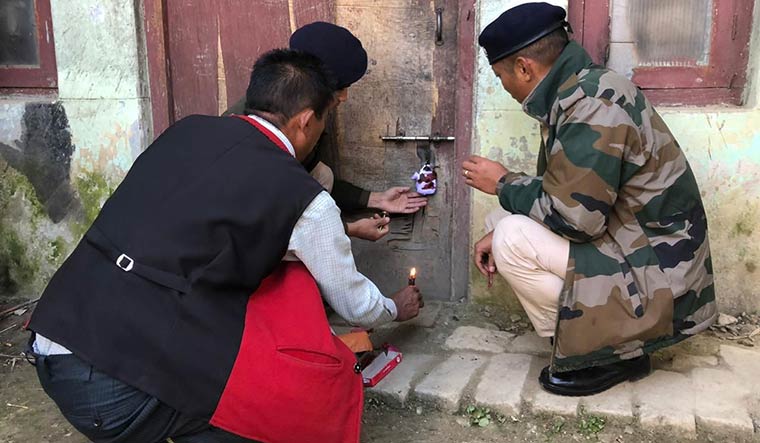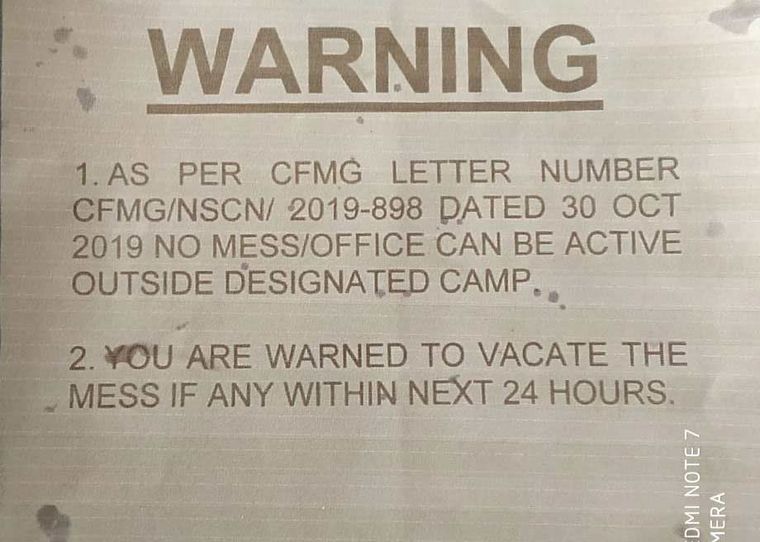IN NOVEMBER 2019, the chief of the largest Naga rebel group—Thuingaleng Muivah of the Isak-Muivah faction of the National Socialist Council of Nagaland—left his government-provided bungalow in Delhi’s Lodhi Estate for Camp Hebron in Nagaland. The 85-year-old Muivah is the ato kilonser (prime minister) of the NSCN(IM), and his arrival in Hebron, the group’s military and administrative headquarters in Dimapur district, signalled that the peace deal that the Union government has long been negotiating with the Naga rebels had again hit a barrier.
The government had signed a framework agreement with the NSCN(IM) in August 2015, and it had set October 31, 2019, as the deadline to sign the final accord. But Muivah was not ready to settle for half measures. He wanted to realise the rebel dream of a greater Nagalim, encompassing territories in Manipur, Assam and Arunachal Pradesh, and having its own constitution and flag. So the NSCN(IM)’s chief negotiator told R.N. Ravi, Nagaland governor and the Centre’s interlocutor, that the agreement could not be signed in its existing form. “We have not compromised on the flag and the constitution,” Naga army chief Antony Shimray told THE WEEK.
The peace deal will require the dismantling of 13 camps maintained by various factions of the NSCN. The NSCN(IM) has nine such camps, the largest being Hebron. The Kitovi-Neopao faction of the NSCN has three camps, while the NSCN(Reformation) has one.
The proposal to disarm them has made the rebels restive. “The Naga cadres, who have risked their lives and sacrificed generations to the movement, are feeling unsure about their future,” said an NSCN(IM) functionary. “They look upon their leader for direction. What will be their life after the struggle is over? Can they lead normal lives? These are some of the questions that need to be answered—both by the government and the Naga leaders.”
The Naga insurgents, who number around 5,000, are likely to be offered resettlement packages. Some of the rebels may be inducted into police and paramilitary units, like the newly created Indian Reserve Battalion, while the others could be offered jobs. “It may be one of the biggest resettlement and rehabilitation processes the Indian subcontinent has witnessed in an insurgency-affected zone in recent times,” said D.K. Pathak, former chairman of the ceasefire monitoring group, set up by the government in 2001 to pave the way for a permanent peace accord.
Apart from the armed cadres, the insurgent groups employ thousands of civilians in the parallel governments run by them. “They (the civilians) will be left without jobs and their resettlement will be important,” said Pathak. “Only some of them may get jobs.”
With the peace accord hanging fire, the Assam Rifles, the Nagaland Police and intelligence agencies are on the alert. The security forces are heavily patrolling areas around the rebel camps, ensuring that the ceasefire rules are adhered to. Searches have been conducted at camps and residences of leaders. Unauthorised camps that had been in existence for decades have been closed down and sealed by the security forces.
At the NSCN(IM)’s general headquarters at Hebron, Muivah is busy holding discussions with his lieutenants and cadres. His residence is just a stone’s throw away from that of Shimray, his army chief. The past few months have seen a sudden increase in the number of young recruits to the various rebel groups. Some veteran rebels have defected to the NSCN(IM) in the hope of benefiting from a resettlement package if the final peace agreement is signed.
The surge in recruitment and defections has rattled the intelligence agencies. Several young aspiring rebels have been nabbed and sent back to their homes. The security agencies have told rebel leaders that the rising number of recruits would mean increased competition for government jobs and rehabilitation packages. “The government wants to ensure that only those who have spent years in the struggle or have certain skills get the benefits of the resettlement packages,” said an official.
Even though the Naga insurgency is several decades old, the Union government does not have an official list of existing rebels or of the arms and ammunition they possess. This is posing a huge security challenge, as the security forces are in the dark about the military strength of the rebels. It is known that the rebels get cross-border support, especially from China and Myanmar. Intelligence reports recently revealed that a top NSCN(IM) leader and two of his lieutenants who went to China last November were yet to return. The three rebels are allegedly wanted by the National Investigation Agency in a murder case.
The chairman of the ceasefire monitoring group maintains a list of senior NSCN leaders who are allowed to carry concealed weapons. The size and make of the weapons are not specified. The leaders are also allowed to have one personal security officer, who can also carry concealed weapons. The chairman of the ceasefire monitoring group deals with senior leaders only; the NSCN cadres are governed by group commanders.
“Lists of names are maintained by the state government at the village and district levels,” said an official. “But there is no official list. No insurgent group has submitted an official list, nor have they shared a list of weapons they possess.”
The government and the insurgent groups have drawn their lessons from the 1975 Shillong Accord, which had the rebels renouncing their demand for Nagaland’s secession from India. The failed accord had led to the division of Naga insurgent groups and the creation of NSCN factions. This time, though, the rebels want unity among themselves, while the government wants to ensure that no clause of the peace accord remains contentious. “A majority of stakeholders should be on board,” said Pathak. “This will be the deal clincher.”




